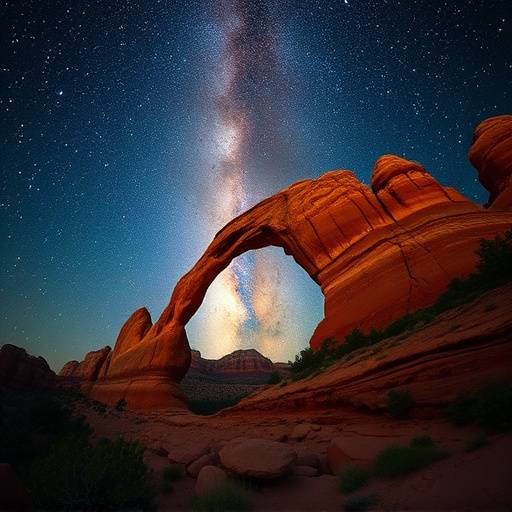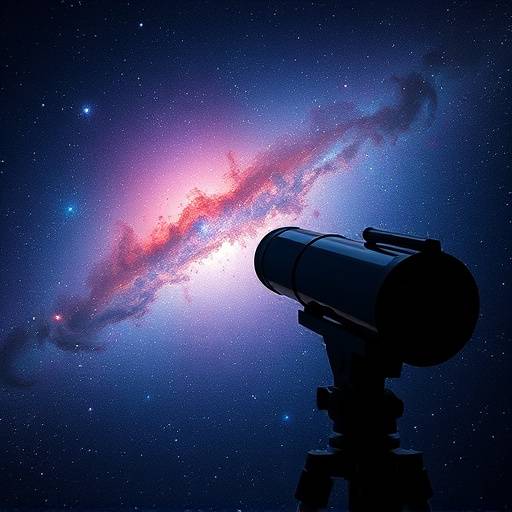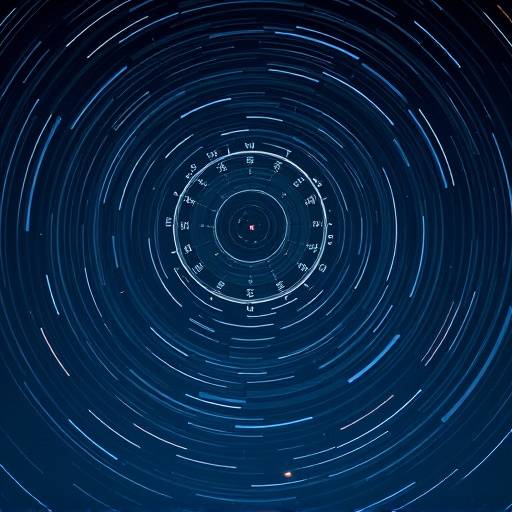
Sedona: A Stargazer's Paradise
Published by Dr. Evelyn Reed on October 26, 2024
Sedona, Arizona, is renowned for its stunning red rock landscapes and its vibrant arts scene. But did you know it’s also a premier destination for stargazing? The city's commitment to dark sky preservation makes it an ideal location to observe the celestial wonders. With minimal light pollution, the Milky Way shines brightly, offering breathtaking views of constellations, planets, and distant galaxies. Celestial Retreats offers exclusive access to some of the best stargazing spots in the area.
One of the key factors contributing to Sedona's dark skies is its adherence to strict outdoor lighting regulations. These regulations limit the amount of artificial light emitted into the night sky, ensuring that the natural darkness is preserved. This commitment not only benefits stargazers but also protects the local ecosystem, as many nocturnal animals rely on darkness for survival. The International Dark-Sky Association recognizes Sedona's efforts, further solidifying its status as a stargazing paradise.
At Celestial Retreats, we provide our guests with everything they need to make the most of their stargazing experience. From high-powered telescopes to knowledgeable guides who can point out constellations and celestial objects, we ensure that every guest has an unforgettable encounter with the cosmos. Our retreats are located in areas with minimal light pollution, allowing for optimal viewing conditions. Imagine lying back in a comfortable lounge chair, surrounded by the tranquil beauty of the Arizona desert, while gazing at the Milky Way stretching across the sky. It’s an experience that will leave you in awe of the universe.
"Sedona's dark skies are a precious resource that we must protect for future generations. By minimizing light pollution, we can ensure that everyone has the opportunity to experience the wonder and beauty of the night sky." - Dr. Evelyn Reed, Founder of Celestial Retreats
In addition to stargazing, Sedona offers a wealth of other activities for visitors to enjoy. From hiking and biking to exploring ancient Native American ruins, there’s something for everyone in this vibrant city. After a day of adventure, you can relax and unwind at one of our luxurious retreats, where you’ll be treated to breathtaking views of the sunset and the night sky. Celestial Retreats combines the best of both worlds – the excitement of exploring the natural wonders of Sedona and the tranquility of observing the cosmos.

Choosing the Right Telescope for Stargazing in Sedona
Published by Professor Alistair Finch on November 15, 2024
Selecting the right telescope can significantly enhance your stargazing experience, especially in a location as pristine as Sedona. With its dark skies and minimal light pollution, Sedona offers an unparalleled opportunity to observe celestial objects. Whether you are a beginner or an experienced astronomer, understanding the different types of telescopes and their capabilities is crucial. This guide will help you navigate the world of telescopes and choose the perfect one for your celestial adventures.
There are three primary types of telescopes: refractors, reflectors, and catadioptric telescopes. Refractors use lenses to focus light, reflectors use mirrors, and catadioptric telescopes combine both lenses and mirrors. Each type has its own advantages and disadvantages. Refractors are known for their sharp images and ease of use, making them ideal for beginners. Reflectors, on the other hand, offer larger apertures at a lower cost, making them suitable for observing faint objects such as galaxies and nebulae. Catadioptric telescopes provide a good balance of both, offering versatility and portability.
When choosing a telescope, aperture is one of the most important factors to consider. Aperture refers to the diameter of the telescope's primary lens or mirror, and it determines how much light the telescope can gather. A larger aperture allows you to see fainter objects and resolve finer details. For stargazing in Sedona, a telescope with an aperture of at least 6 inches is recommended. This will allow you to observe a wide range of celestial objects, from planets and moons to galaxies and star clusters.
In addition to aperture, magnification is another important factor to consider. Magnification refers to how much larger a telescope makes an object appear. However, it's important to note that higher magnification does not always mean better viewing. Excessive magnification can result in blurry and distorted images. The optimal magnification depends on the telescope's aperture and the seeing conditions. A general rule of thumb is to limit magnification to no more than 50x per inch of aperture.
# Sample Python code for calculating magnification
def calculate_magnification(focal_length_telescope, focal_length_eyepiece):
"""
Calculates the magnification of a telescope.
Args:
focal_length_telescope (float): The focal length of the telescope in millimeters.
focal_length_eyepiece (float): The focal length of the eyepiece in millimeters.
Returns:
float: The magnification of the telescope.
"""
magnification = focal_length_telescope / focal_length_eyepiece
return magnification
# Example usage
telescope_focal_length = 1000 # mm
eyepiece_focal_length = 25 # mm
magnification = calculate_magnification(telescope_focal_length, eyepiece_focal_length)
print(f"The magnification is: {magnification}x")
Celestial Retreats offers a variety of telescopes for our guests to use, ranging from beginner-friendly refractors to high-powered reflectors. Our knowledgeable staff can provide guidance on selecting the right telescope for your needs and can offer tips on how to use it effectively. We also provide guided stargazing tours, where you can learn about the constellations, planets, and other celestial objects from experienced astronomers. With the right telescope and a clear night sky, your stargazing experience in Sedona will be truly unforgettable.

Astrophotography: Capturing the Beauty of the Night Sky in Sedona
Published by Isabella Rodriguez on December 5, 2024
Astrophotography is the art of capturing the beauty of the night sky through photography. Sedona, with its dark skies and stunning landscapes, is an ideal location for astrophotography enthusiasts. Whether you're a seasoned photographer or a beginner, this guide will provide you with the basics of astrophotography and tips for capturing stunning images of the cosmos in Sedona.
To get started with astrophotography, you'll need a few essential pieces of equipment. A DSLR or mirrorless camera with manual controls is crucial. You'll also need a wide-angle lens with a low f-number (e.g., f/2.8 or lower) to capture as much light as possible. A sturdy tripod is essential for keeping your camera steady during long exposures. A remote shutter release or intervalometer will allow you to take multiple exposures without touching the camera, minimizing vibrations. A star tracker can help compensate for the Earth's rotation, allowing for longer exposures without star trails.
When shooting astrophotography, it's important to find a location with minimal light pollution. Sedona offers several excellent dark sky locations, including areas within the Coconino National Forest and near Slide Rock State Park. Before heading out, check the weather forecast and moon phase. Clear skies and a new moon are ideal for astrophotography. Use a light pollution map to identify areas with the darkest skies.
Once you've found a dark sky location, set up your camera on the tripod and attach your wide-angle lens. Set your camera to manual mode and adjust the following settings: aperture (lowest f-number), ISO (800-3200), and shutter speed (15-30 seconds). Use the "500 rule" (500 / focal length = maximum exposure time) to determine the maximum exposure time before star trails start to appear. Focus your lens manually on a bright star or distant object. Take a test shot and adjust your settings as needed.
For more advanced astrophotography, consider using a star tracker. A star tracker is a motorized mount that compensates for the Earth's rotation, allowing for longer exposures without star trails. This allows you to capture fainter details in galaxies, nebulae, and star clusters. To use a star tracker, you'll need to polar align it with the North Star (Polaris). Follow the instructions provided with your star tracker for proper alignment.
# Example formula for calculating maximum exposure time (500 rule)
focal_length = 24 # Focal length of the lens in mm
max_exposure_time = 500 / focal_length
print(f"Maximum exposure time before star trails: {max_exposure_time} seconds")
Celestial Retreats offers guided astrophotography workshops in Sedona, where you can learn from experienced astrophotographers and improve your skills. We provide access to state-of-the-art equipment and offer personalized instruction. Whether you're a beginner or an advanced photographer, our workshops will help you capture stunning images of the night sky.



Comments
This article perfectly captures the magic of stargazing in Sedona! I can't wait to book a retreat with Celestial Retreats and experience it for myself.
I've always been fascinated by the night sky. Thanks for highlighting Sedona as a top destination. I'll definitely add it to my travel list!
Leave a Comment